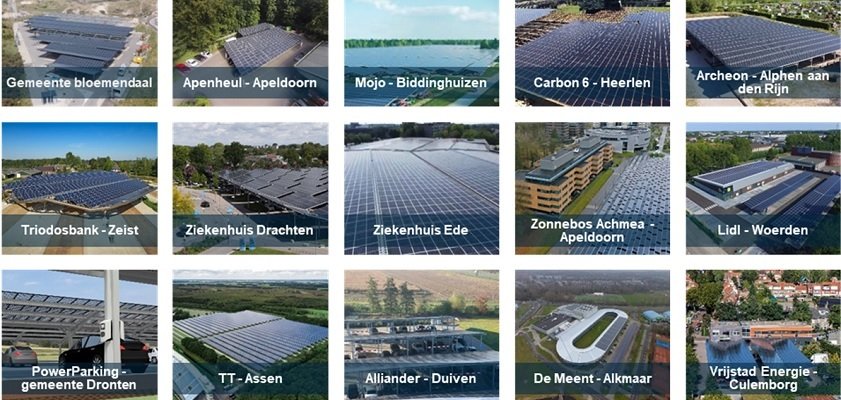The Netherlands can install roofs of up to 11 gigawatts with solar panels over parking spaces. A total of 80 square kilometers of parking space is suitable for a solar powered car park.
This is the result of research conducted by CE Delft and Merosch on behalf of the Dutch Enterprise Agency (RVO).
inspiration guide
The research into the realization possibilities of solar cars has been set up as an inspiration guide for parking lot owners, initiators of solar energy projects and local authorities.
Through practical examples, analysis of market developments, business case clarification, and an overview of the most important opportunities and bottlenecks, this group should be inspired to take action and thus utilize the potential of solar energy above the parking spaces.
20 bigger projects
According to the researchers, about 20 larger projects are currently completed in the Netherlands, and about 10 more are scheduled to be completed until 2022. Collectively, this is still less than 1 percent of the national solar potential above parking spaces.
The inventory shows that there are good examples of projects and an emerging and growing market with potential. What is also remarkable is that nearly 80 percent of the projects considered have been or will be realized on private ownership of corporations and businesses, and thus remain very limited in public parking.
9.2 to 11 gigawatts at peak
The researchers identified solar energy potential over parking lots for each of the 30 regions that have developed a regional energy strategy (RES). The regions with the greatest spatial potential are North-South Holland and Rotterdam-The Hague.
If all sites in the Netherlands are used, a maximum of 9.2 to 11 GW solar panels can be installed, with an estimated yield between 8.1 and 9.6 TWh per year. This represents more than 25 percent of the 35 TWh of sustainable electricity that must be generated on land from large-scale solar and wind power in 2030 according to the Climate Agreement.
Opportunities and bottlenecks
The usability of the site in practice depends on various factors, for example whether a positive business case study can be established; whether the site is also used for purposes other than parking only (such as a market); And whether there is enough network capacity.
Opportunities and bottlenecks must be looked at locally for each location. In CE Delft and Merosch’s research, many opportunities and bottlenecks have emerged regarding solar vehicles.
|
Top 5 Chances |
|
1. Contribute to sustainability goals. |
|
2. Reducing energy consumption, driving costs abroad, and establishments that have their own car parks. |
|
3. Reducing the energy bill of the adjacent building. |
|
4. Cars are protected from weather conditions (eg shade in summer). |
|
5. The combination with charging stations is a great opportunity to directly use solar energy for electric vehicles. |
|
Top 5 Jams |
|
1. Achieving a feasible feasibility study. |
|
2. Connecting the generated power to the network. |
|
3. Make changes to your local zoning plan. |
|
4. The urban image of a sun garage. |
|
5. Parking areas are less flexible relative to a market or event, eg. |
Top 25 Parking Lots
Based on the data collected, the report includes the top 25 locations with the largest parking spots in the Netherlands. These sites may be interesting for further investigation locally.
The central government is also advised to look for a new form of subsidy that is the solar carport. For example, a separate class for solar panels over parking spaces under the current SDE++ subsidy scheme. The size of the support can also be a factor in determining the amount of support.

“Total coffee specialist. Hardcore reader. Incurable music scholar. Web guru. Freelance troublemaker. Problem solver. Travel trailblazer.”






More Stories
“Ask at least one question in return.”
Elbendamers in the Sun: What a Wonderful Little Village
European Space Agency – Space for Kids